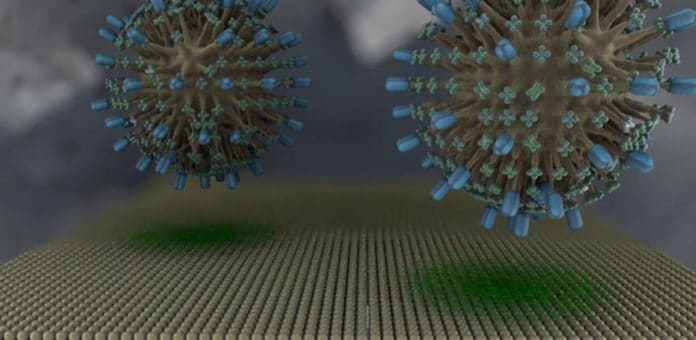Cell membranes play a vital role in controlling everything from pain relief to infection by a virus. It acts as the gatekeeper between a cell and the outside world.
Scientists from the University of Cambridge, Cornell University, and Stanford University created a sensor that preserves all of the critical aspects of a cell membrane—structure, fluidity, and control over ion movement—without the time-consuming steps needed to keep a cell alive.
Scientists have developed a human cell ‘membrane on a chip’ that allows continuous monitoring of how drugs and infectious agents interact with our cells, and may soon be used to test potential drug candidates for COVID-19.
The device could mimic any cell type–bacterial, human, or even the tough cells’ walls of plants. Using an electronic chip, the device measure changes in an overlying membrane extracted from a cell. Through this, scientists can easily understand cell interaction with the outside world.
The device integrates cell membranes with conducting polymer electrodes and transistors. To generate the on-chip membranes, the Cornell team first optimized a process to produce membranes from live cells and then, working with the Cambridge team, coaxed them onto polymeric electrodes in a way that preserved all of their functionality. The hydrated conducting polymers provide a more ‘natural’ environment for cell membranes and allow robust monitoring of membrane function.
The Stanford team optimized the polymeric electrodes for monitoring changes in the membranes. The device no longer relies on live cells that are often technically challenging to keep alive and require significant attention, and measurements can last over an extended period.
Susan Daniel, associate professor of chemical and biomolecular engineering at Cornell said, “Because the membranes are produced from human cells, it’s like having a biopsy of that cell’s surface – we have all the material that would be present including proteins and lipids, but none of the challenges of using live cells.”
Dr. Róisín Owens from Cambridge’s Department of Chemical Engineering and Biotechnology and senior author of the ACS Nano paper said, “The pharmaceutical industry typically does this screening with live cells, but our device provides an easier alternative. This method is compatible with high-throughput screening and would reduce the number of false positives, making it through into the R&D pipeline.”
Dr. Anna-Maria Pappa, also from Cambridge and joint first author on both papers, said, “The device can be as small as the size of a human cell and easily fabricated in arrays, which allows us to perform multiple measurements at the same time.”
Dr. Han-Yuan Liu, Cornell researcher and joint first author on both papers, said, “With this device, we are not exposed to risky working environments for combating SARS-CoV-2. The device will speed up the screening of drug candidates and provide answers to questions about how this virus works.”
Future work will focus on scaling up production of the devices at Stanford and automating the integration of the membranes with the chips, leveraging the fluidics expertise from Stanford PI Juan Santiago, who will join the team in August.
Journal References:
- H-Y Liu et al. “Self-assembly of mammalian cell membranes on bioelectronic devices with functional transmembrane proteins.” ACS Langmuir (2020). DOI: 10.1021/acs.langmuir.0c00804
- A-M. Pappa et al. “Optical and Electronic Ion Channel Monitoring from Native Human Membranes.” ACS Nano (2020). DOI: 10.1021/acsnano.0c01330
